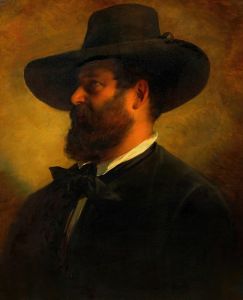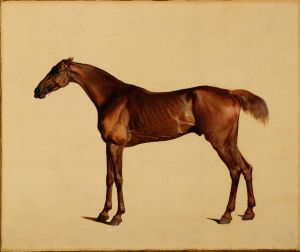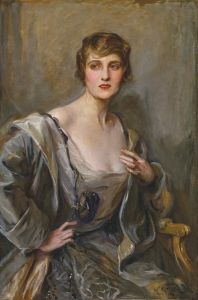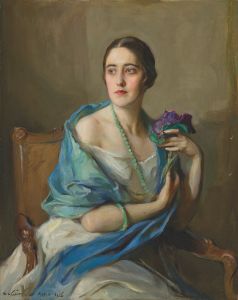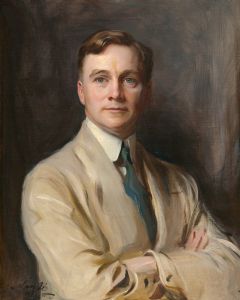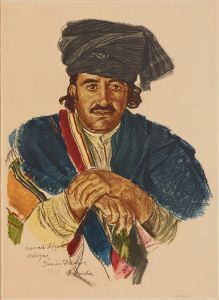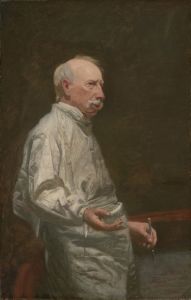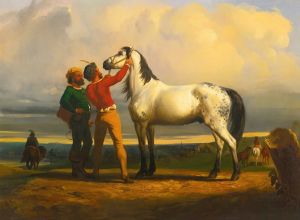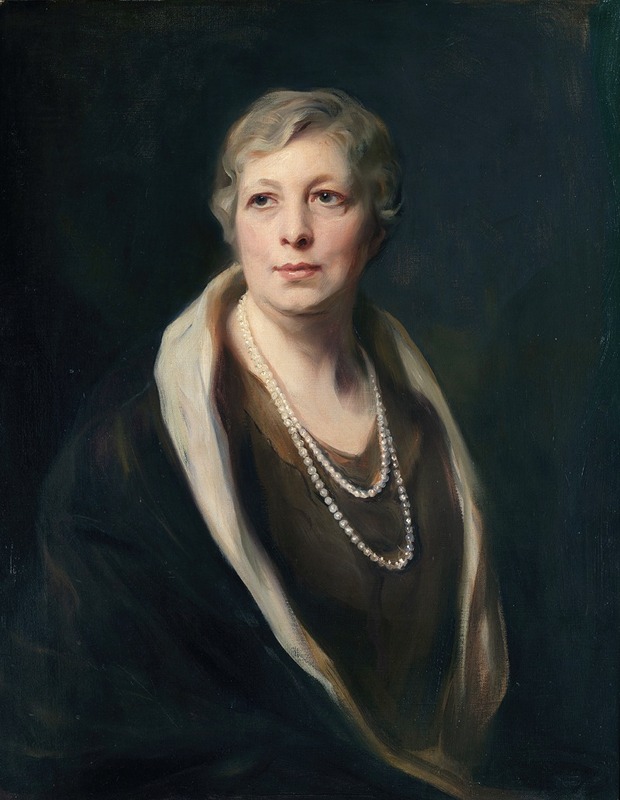
Olive Thring
A hand-painted replica of Philip Alexius de László’s masterpiece Olive Thring, meticulously crafted by professional artists to capture the true essence of the original. Each piece is created with museum-quality canvas and rare mineral pigments, carefully painted by experienced artists with delicate brushstrokes and rich, layered colors to perfectly recreate the texture of the original artwork. Unlike machine-printed reproductions, this hand-painted version brings the painting to life, infused with the artist’s emotions and skill in every stroke. Whether for personal collection or home decoration, it instantly elevates the artistic atmosphere of any space.
Philip Alexius de László was a renowned Anglo-Hungarian painter, celebrated for his portraits of royal and aristocratic figures. One of his notable works is the portrait of Olive Thring. De László was known for his ability to capture the essence and personality of his sitters, and his portrait of Olive Thring is no exception.
Olive Thring was a member of the British social elite, and her portrait by de László reflects the artist's skill in portraying the grace and elegance of his subjects. The painting is characterized by its attention to detail and the subtle use of color, which are hallmarks of de László's style. His technique often involved a soft, yet precise brushwork that brought out the textures of fabrics and the delicate features of the human face.
De László's portraits were highly sought after during his lifetime, and he painted numerous members of the European aristocracy and other prominent figures. His ability to convey the dignity and poise of his subjects made him a favorite among the upper echelons of society. The portrait of Olive Thring is a testament to his reputation as one of the leading portraitists of his time.
The painting of Olive Thring is likely to have been executed with oil on canvas, a common medium for de László's works. His portraits often featured a neutral or softly colored background, which served to highlight the subject without distraction. The lighting in his paintings was typically naturalistic, enhancing the three-dimensionality of the figure.
Philip de László's career spanned several decades, during which he received numerous accolades and honors. He was appointed a Member of the Royal Victorian Order by King Edward VII and was later knighted by King George V. His works are held in high regard and can be found in various prestigious collections and institutions around the world.
The portrait of Olive Thring, like many of de László's works, is a reflection of the social and cultural milieu of the time. It provides insight into the fashion, demeanor, and societal roles of women in the early 20th century. De László's portraits are not only artistic achievements but also historical documents that offer a glimpse into the lives of their subjects.
While specific details about Olive Thring's life and her connection to de László may not be extensively documented, the portrait remains an important piece within the artist's oeuvre. It exemplifies his mastery in portraiture and his ability to immortalize the individuals he painted.
In summary, the portrait of Olive Thring by Philip Alexius de László is a fine example of the artist's work, showcasing his technical skill and his talent for capturing the character and elegance of his subjects. De László's legacy as a portrait artist endures, with his paintings continuing to be admired for their beauty and historical significance.





